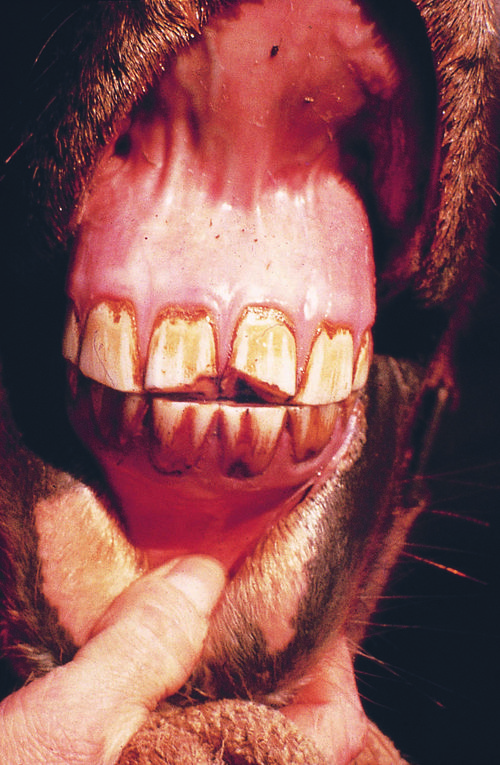Difference between revisions of "Veterinary Dentistry Q&A 14"
Jump to navigation
Jump to search
(Created page with "[[|centre|500px]] <br /> '''Halitosis is a very common complaint among pet owners.''' <br /> <FlashCard questions="3"> |q1=What conditions may cause halitosis? What are their...") |
|||
| (2 intermediate revisions by 2 users not shown) | |||
| Line 1: | Line 1: | ||
| − | [[|centre|500px]] | + | {{Template:Manson |
| + | |book = Veterinary Dentistry Q&A}} | ||
| + | |||
| + | [[File:Vet Dentistry 14.jpg|centre|500px]] | ||
<br /> | <br /> | ||
| − | ''' | + | '''During the examination of a horse on behalf of a prospective purchaser, an oral inspection was performed to assess age and oral conformation.''' |
<br /> | <br /> | ||
| − | <FlashCard questions=" | + | <FlashCard questions="1"> |
| − | |q1=What | + | |q1=What significance should be attached to the pattern of wear found on the incisor teeth? |
|a1= | |a1= | ||
| − | + | The pattern of wear on the first incisors arose by abrasion and is highly suggestive that the horse is a crib-biter and/or wind-sucker. <br><br> | |
| − | + | In many countries it is the legal responsibility of a vendor to declare whether or not a horse is free from stable vices (stereotypic behavior). <br><br> | |
| − | + | However, in the face of the findings shown, the examining veterinarian should observe the resting horse carefully for any tendency to display these stereotypes, and in any event the client should be advised of the possible significance of the dental changes. | |
| − | + | |l1=Abnormal Wear of Teeth | |
| − | |||
| − | |||
| − | |||
| − | |||
| − | |||
| − | |||
| − | |||
| − | |||
| − | |||
| − | |||
| − | |||
| − | |||
| − | |||
| − | |||
| − | |||
| − | |||
| − | |||
| − | |||
| − | |||
| − | | | ||
</FlashCard> | </FlashCard> | ||
Latest revision as of 13:46, 14 October 2011
| This question was provided by Manson Publishing as part of the OVAL Project. See more Veterinary Dentistry Q&A. |
During the examination of a horse on behalf of a prospective purchaser, an oral inspection was performed to assess age and oral conformation.
| Question | Answer | Article | |
| What significance should be attached to the pattern of wear found on the incisor teeth? | The pattern of wear on the first incisors arose by abrasion and is highly suggestive that the horse is a crib-biter and/or wind-sucker. |
Link to Article | |
